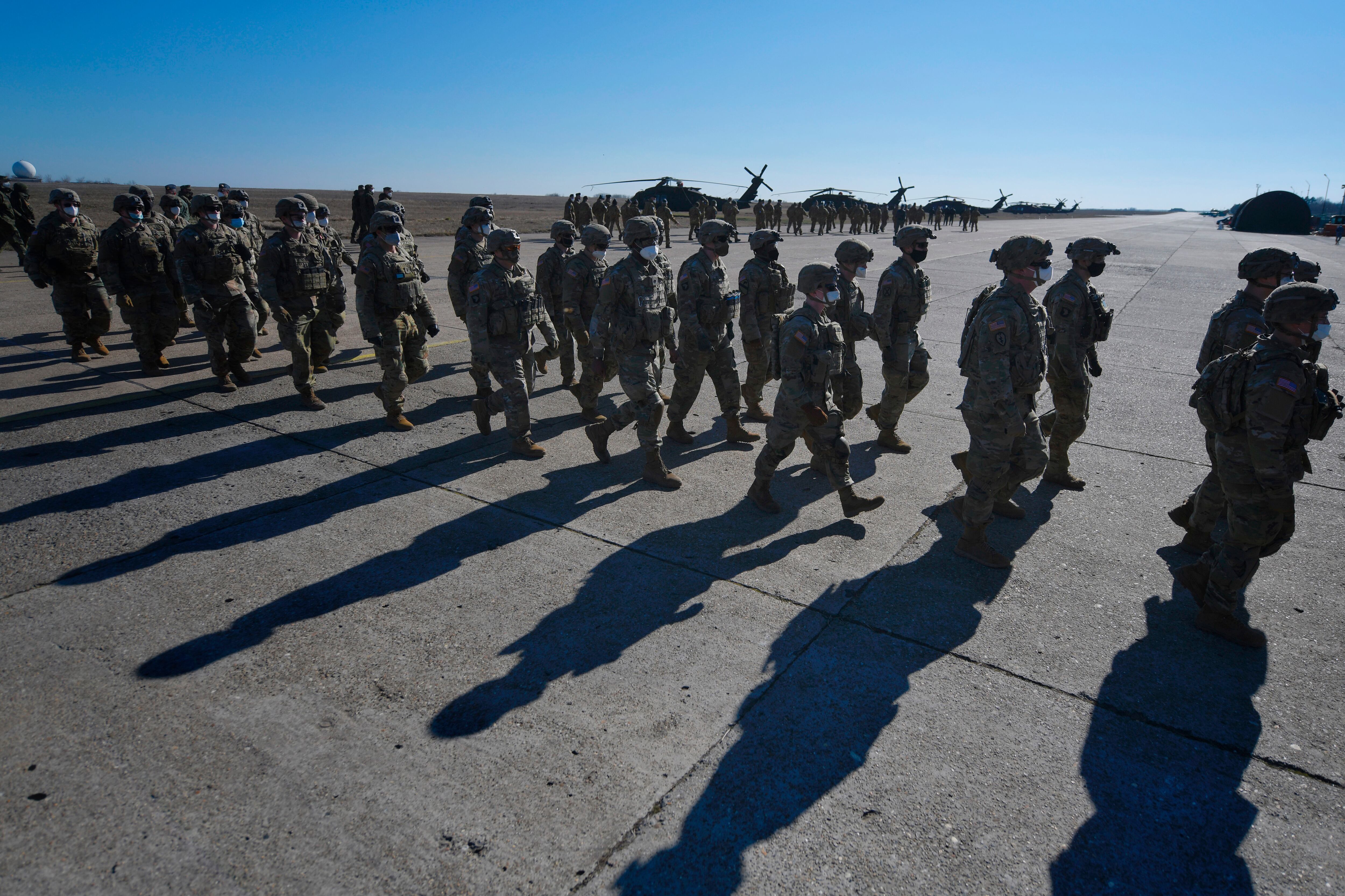WASHINGTON ― Senate lawmakers finalized a $1.5 trillion spending bill late Thursday that provides $13.6 billion in new aid for Ukraine and funding stability for the Defense Department for the rest of the fiscal year.
President Joe Biden is expected to sign the measure into law Friday. Without the budget deal, government agencies would have faced partial shutdowns starting Saturday morning because of a lapse in available funding.
In a statement Thursday night, White House press secretary Jen Psaki praised the bipartisan deal as allowing federal officials to “advance American leadership abroad” and “deliver historic support for the Ukrainian people as they defend their country and democracy.”
She also noted the full-year budget agreement “ends a damaging series of short-term continuing resolutions that have undermined the government’s ability to meet pressing challenges.”
The budget deal includes $728.5 billion in discretionary funding for the Department of Defense for fiscal 2022 (which began in October). That’s an increase of nearly 5% over fiscal 2021 defense spending levels.
Rep. Betty McCollum, chairwoman of the House Appropriations Committee’s defense panel, in a statement praised the final spending deal as “absolutely necessary to meet the needs of the American people and confront unprecedented global challenges.”
The package passed both the House and Senate this week with significant bipartisan backing.
Senate Armed Services Committee ranking member Jim Inhofe, R-Okla., said the military funding level — well above what the White House requested in its budget — will help maintain military investments and “keep us from falling even further behind China” and other adversaries.
Since the new fiscal year began Oct. 1, defense planners have been operating on a series of budget measures that kept spending at fiscal 2021 levels. That meant new equipment purchases, program starts and other new priorities have been sidelined for months awaiting the full-year agreement.
That has been particularly problematic in the area of military personnel. A 2.7% pay raise went into effect for service members Jan. 1, but Pentagon leaders were not given extra money to implement that change. As a result, officials have had to move money from other accounts to cover those costs, totaling more than $200 million.

The new compromise budget solves that problem, and also provides a large aid package for Ukrainian officials fighting back against Russian forces that invaded their country last month.
About half of the $13.6 billion will go to the Department of Defense, in large part to restore military stocks of equipment already transferred to Ukrainian military units through the president’s drawdown authority. Though on the second day of the war the White House proposed spending $6.4 billion, the special fund grew steadily over the last two weeks amid Ukraine’s battlefield gains against Russia and pressure from lawmakers.
Pentagon Comptroller Mike McCord told a defense industry audience this week Ukraine will force increases to future defense budgets. The added funding in this budget, he said, dovetails with Defense Secretary Lloyd Austin’s pressure on his staff to do as much as possible for Ukraine.
“He has been admonishing us that at every daily meeting, and we do have daily meetings on this, to focus on helping Ukrainians with our drawdown authorities as fast as we can, as long as we’re able to safely,” McCord said. “That has been a big priority and Congress has been very supportive of that.”
Another $3.1 billion will cover “deployment, operational, and intelligence costs” for U.S. forces deployed to Europe in response to the Russian actions. Nearly 15,000 American service members have been deployed to the region in support of NATO allies in recent weeks, but none have been sent into Ukraine itself.
The bill also funds the Ukraine Security Assistance Initiative — an account to help train and equip the Ukrainian military — at $300 million.
The State Department will receive about $4 billion for “the rapidly expanding humanitarian crisis in Ukraine.” Officials say more than 12 million people in the region are in need of food, shelter and other basic necessities because of shortages caused by the fighting.
The bill provides $650 million for military support and “an expansion of existing authorities to bolster the defense capabilities of the Ukrainian military and regional allies.”
The increased defense top line is a boon to Pentagon’s weapons programs and the defense industry. The budget’s defense procurement allotment exceeds the budget request by about $12 billion, with lawmakers adding $7 billion more for research and development.
Among notable moves for the Air Force, it would buy 20 more C-130J Super Hercules aircraft, made by Lockheed Martin, primarily for the Air National Guard to modernize two operational wings at an additional cost of $1.8 billion. Amid testing failures, the Air Force’s planned hypersonic missile, the the AGM-183A Air-Launched Rapid Response Weapon, is facing a $161 million cut.
Lawmakers added 12 F/A-18E/F Super Hornets to the Navy’s budget, keeping the Boeing’s production line going, and they added five ships ― including one more Arleigh Burke-class guided-missile destroyer than the administration requested.
The Army won about $300 million more than requested for Stryker and Abrams upgrades and $500 million more for aircraft, chiefly to add more UH-60 Blackhawks, CH-47 Chinooks and Gray Eagle drones.
With reporting by Megan Eckstein and Stephen Losey.
Leo covers Congress, Veterans Affairs and the White House for Military Times. He has covered Washington, D.C. since 2004, focusing on military personnel and veterans policies. His work has earned numerous honors, including a 2009 Polk award, a 2010 National Headliner Award, the IAVA Leadership in Journalism award and the VFW News Media award.
Joe Gould was the senior Pentagon reporter for Defense News, covering the intersection of national security policy, politics and the defense industry. He had previously served as Congress reporter.





